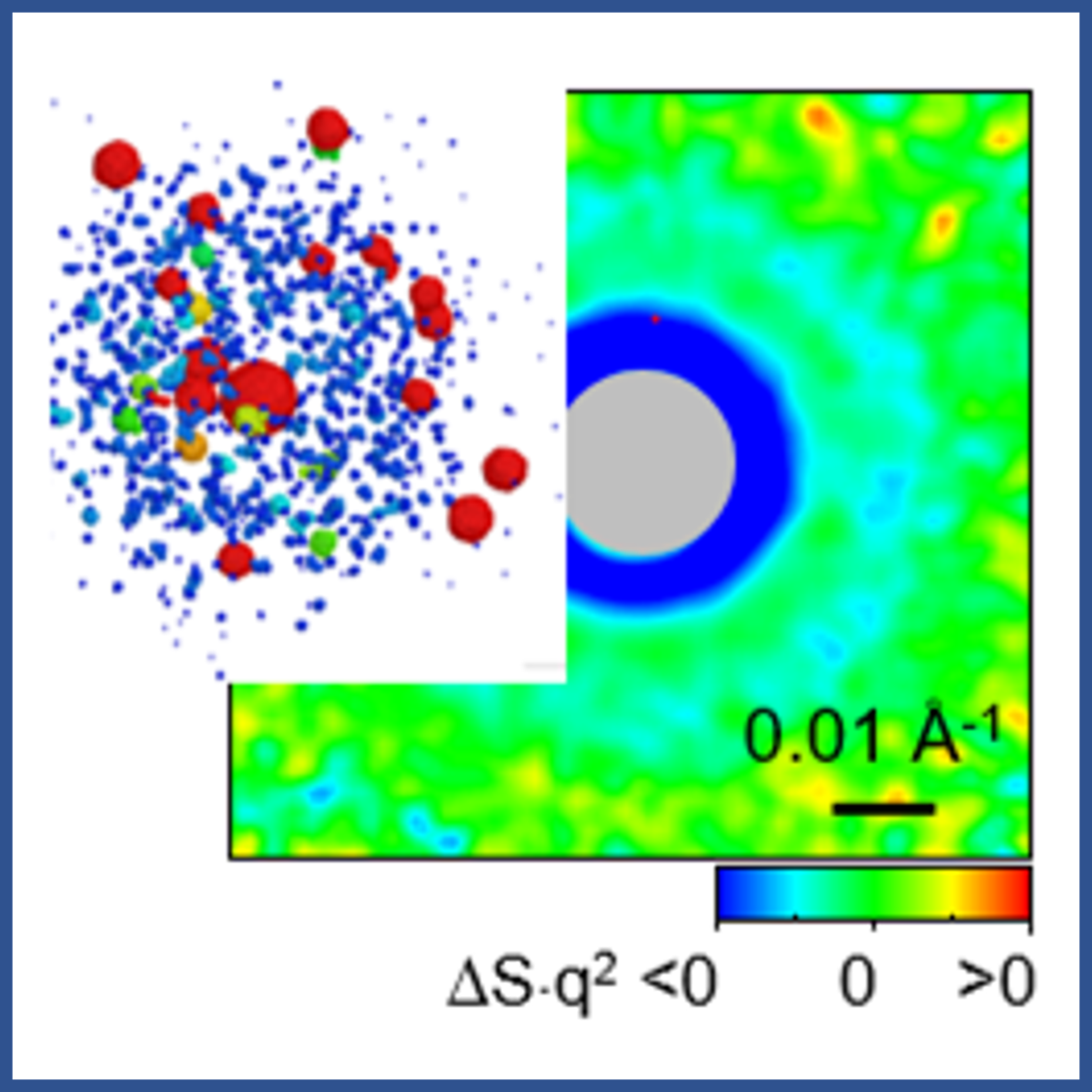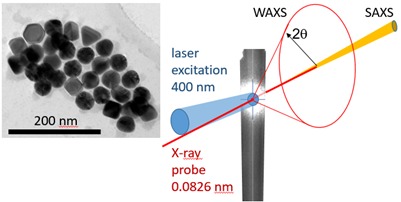
Picosecond laser fragmentation mechanism clarified
- Date: Apr 2024
-
The laser fragmentation of gold colloids has been investigated both with picosecond time resolved x-ray scattering as well as in large-scale simulation methods. The results confirm a model of thermal phase explosion of the laser-excited nanoparticles, which explains the size distribution of fragments in the 2-3 nm range.
Picosecond laser fragmentation mechanism for the synthesis of active clusters clarified
A cooperation of several groups, as University of Duisburg-Essen, University of Virginia and KIT, have clarified the fragmentation mechanism of gold nanoparticles in water by combining ultrafast x-ray scattering and the results from large-scale molecular dynamics simulations. While larger gold nanoparticles are relatively easily produced by chemical as well as physical methods (laser ablation) important applications, such as catalysis or biophotonic use of nanoparticles require extremely small and uniform nanoparticles of less than 3 nm in diameter. Gold, an otherwise inert material develops catalytic activity or even efficient photoluminescence, if the particles size approaches 3 nm or less.
The experiment was able to follow the temporal evolution of the photo-excited gold nanoparticles by pulsed x-ray small angle scattering (SAXS) as well as powder scattering. These results allow following the thermal evolution as well as size changes in situ. Experiments were performed at the European Synchrotron Radiation facility with nanoparticle analysis done at the KIT Light Source. The close correlation to the results of the atomistic simulations confirm that the fragmentation process is governed by phase explosion on a thermal pathway, once the laser pulse length exceeds a picosecond. It is clarified that the efficient fragmentation requires laser pulse energies that exceed the energy for melting of gold by a factor of 4-6. This overheating reaches the limit of thermodynamic stability of solid gold (spinodal).
Original publication
A. Plech, M. Tack, H. Huang, M. Arefev, A. R. Ziefuss, M. Levantino, H. Karadas, C. Chen, L. V. Zhigilei, S. Reichenberger: Physical Regimes and Mechanisms of Picosecond Laser Fragmentation of Gold Nanoparticles in Water from X-ray Probing and Atomistic Simulations, ACS Nano, Articles 2024, DOI: 10.1021/acsnano.3c12314
Further reading
S. Reich, A. Letzel, A. Menzel, N. Kretzschmar, B. Gökce, S. Barcikowski, A. Plech: Early appearance of crystalline nanoparticles in pulsed laser ablation in liquids dynamics, Nanoscale 11 (2019) 6962 - 6969. DOI: 10.1039/C9NR01203F
A. R. Ziefuss, S. Reich, S. Reichenberger, M. Levantino, A. Plech: In situ structural kinetics of picosecond laser-induced heating and fragmentation of colloidal gold spheres, Phys. Chem. Chem. Phys. 2020, 22, 4993 DOI: 10.1039/c9cp05202j


